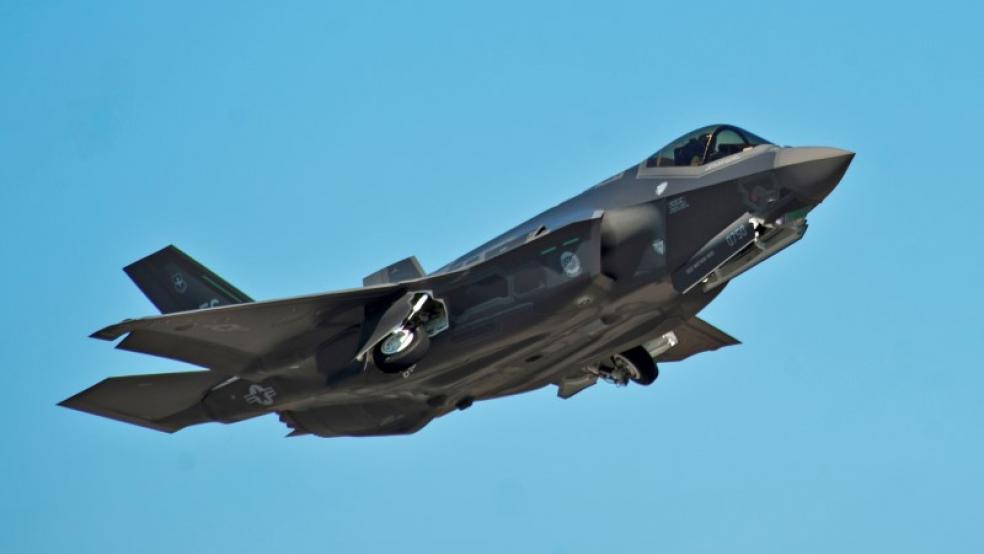The $1 trillion F-35 Joint Strike Fighter has taken plenty of lumps in recent years, as the DOD’s next-generation stealth fighter aircraft has experienced mind-boggling cost overruns and occasionally less than stellar test runs.
Despite the Pentagon’s aspirations to develop a truly joint aircraft system that spans the military services, Lockheed Martin’s F-35 Lightning system is essentially three distinct aircrafts with different flying capabilities: The F-35A that uses a conventional takeoff, the F-35B with its short takeoff and vertical landing, and the F-35 C that is launched from aircraft carriers with the assistance of a catapult.
Related: Under New Management? The $1 Trillion F-35 Is Overdue for a Change
In late July 2015, a squadron of F-35B fighters, tailored to the demands of the Marines, was the first to be declared ready for deployment, provided the single-seated aircraft withstood intensive testing. On Thursday, following three weeks of testing and aerial acrobatics at the Eglin Air Force Base in Florida, the results were in – and the Marine Corps apparently had plenty to boast about.
A press release issued by Marine Corps described the highlight of the test missions when an F-35B pilot dropped a 500-pound laser-guided bomb while simultaneously firing an air-to-air missile against an enemy flying drone. Both the bomb and the missile hit their targets.
The successful combat feat came during a major Marine operational test and evaluation at Eglin between August 9 and September 1. It involved three F-35B aircraft and 75 marines who were detached from Edwards Air Force Base in California.
The Marines completed “multiple engineering runs in preparation for the expenditure of five AIM-120 missiles and one Guided Bomb Unit-12 LASER guided bomb,” according to the press release. “The operational test team developed complex air-to-air and air-to-ground scenarios and the F-35 weapons system performed as expected to deliver weapons on target.”
Related: F-35 Nears Production, but It’s Still Having Trouble Booting Up
“On day one of live fire testing, the team was able to shoot two missiles on two separate test set-ups within 12 minutes – an exceptional level of efficiency in a test environment,” the statement went on. “Another test mission involved an F-35B dropping a GBU-12 [bomb] and supporting it with LASER guidance while simultaneously engaging a QF-16 drone. Both weapons successfully guided to their targets.”
Lt. Col. Richard Rusnok, the detachment officer in charge, hailed the testing as a major success, adding that lessons learned will be useful to the other military services and partner countries in bringing along all three versions of the F-35.
“This was a phenomenally successful deployment that was made possible by the close coordination between the JSF Operational Test Team, U.S. Air Force, Navy, Marine Corps and industry,” Rusnok added.




